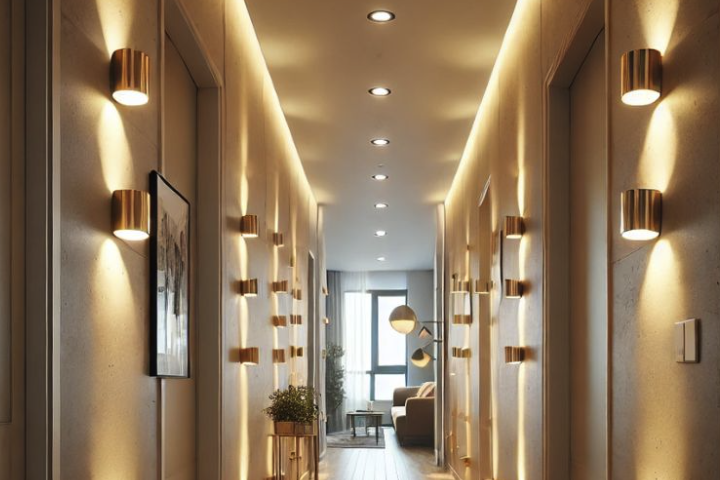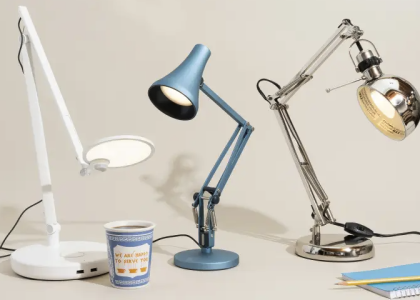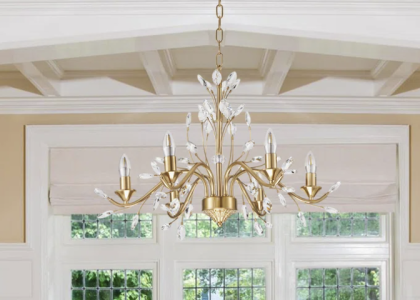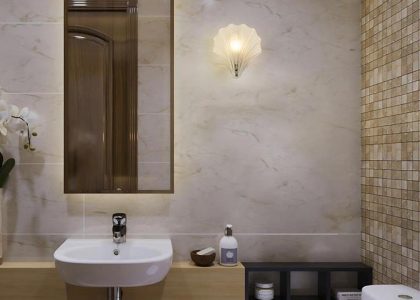Induction wall lamps represent a significant advancement in lighting technology, offering a blend of efficiency, longevity, and aesthetic appeal. Unlike traditional lighting solutions that rely on filaments or gas, induction lamps utilize electromagnetic fields to excite gas molecules, producing light without the need for electrodes. This innovative approach not only enhances the lifespan of the lamp—often exceeding 100,000 hours—but also reduces energy consumption significantly.
As a result, induction wall lamps have gained popularity in various settings, from residential corridors to commercial spaces, where effective and sustainable lighting is paramount. The design of induction wall lamps is versatile, allowing them to seamlessly integrate into different architectural styles. Whether it’s a modern minimalist corridor or a more traditional setting, these lamps can be tailored to fit the ambiance and functionality required.
Their ability to provide consistent illumination without flickering or dimming over time makes them an ideal choice for areas that require reliable lighting, such as hallways and passageways. As we delve deeper into the benefits and features of induction wall lamps, it becomes clear that they are not just a practical choice but also an investment in the future of energy-efficient lighting.
Benefits of Using Induction Wall Lamps in Corridors
Energy Efficiency and Cost Savings
Induction wall lamps consume significantly less power compared to traditional incandescent or fluorescent lights, resulting in lower electricity bills over time. For example, a 50-watt induction lamp can produce the same amount of light as a 150-watt incandescent bulb. This efficiency is particularly advantageous in frequently used corridors, where the cumulative savings can be substantial.
Environmental Benefits and Longevity
The reduced energy consumption of induction wall lamps contributes to a lower carbon footprint, aligning with global efforts to promote sustainability. Additionally, these lamps have a long lifespan, often exceeding 100,000 hours, which means they require far less frequent replacement than traditional lamps. This durability minimizes maintenance costs, reduces waste, and makes them an environmentally friendly option.
Robust Construction and Reliability
The robust construction of induction wall lamps makes them resistant to shock and vibration, ensuring they can withstand the rigors of everyday use. In high-traffic areas like corridors, where lights are often left on for extended periods, the long lifespan of induction lamps Ladanmu means fewer disruptions for maintenance personnel and a more consistent lighting experience for users.
Choosing the Right Induction Wall Lamp for Your Corridor
Selecting the appropriate induction wall lamp for a corridor involves several considerations that can significantly impact both functionality and aesthetics. First and foremost, one must assess the brightness required for the space. Measured in lumens, the brightness level should correspond to the corridor’s size and purpose.
For instance, a narrow corridor may require less lumens than a wide hallway with high ceilings. It is essential to strike a balance between adequate illumination and energy efficiency; therefore, consulting lighting guides or professionals can provide valuable insights into the optimal lumen output for specific applications. In addition to brightness, the design and style of the induction wall lamp should complement the corridor’s overall decor.
Induction lamps come in various shapes, sizes, and finishes, ranging from sleek modern designs to more ornate traditional styles. The choice of color temperature is also crucial; warmer tones (around 2700K) create a cozy atmosphere, while cooler tones (above 4000K) offer a more clinical and vibrant feel. Moreover, features such as dimming capabilities or motion sensors can enhance functionality by allowing users to adjust lighting based on their needs or conserve energy when spaces are unoccupied.
Installation and Maintenance of Induction Wall Lamps
The installation process for induction wall lamps is generally straightforward but requires careful planning to ensure optimal performance and safety. It is advisable to consult with a qualified electrician who can assess the existing electrical infrastructure and determine the best locations for installation. Proper placement is critical; lamps should be positioned at heights that maximize light distribution while minimizing glare.
Additionally, ensuring that wiring is up to code and capable of handling the load is essential for preventing electrical issues down the line. Maintenance of induction wall lamps is minimal compared to traditional lighting options. While regular cleaning is necessary to maintain brightness—especially in dusty environments—there are no bulbs to replace frequently due to their long lifespan.
However, it is prudent to periodically check for any signs of wear or damage in the fixtures or wiring. If issues arise, such as flickering or failure to turn on, it may indicate a problem with the electrical supply rather than the lamp itself. In such cases, consulting with an electrician can help diagnose and resolve any underlying issues efficiently.
Maximizing Energy Efficiency with Induction Wall Lamps
To fully harness the energy efficiency potential of induction wall lamps, several strategies can be employed. One effective method is incorporating smart lighting controls that allow users to adjust brightness levels based on occupancy or time of day. For example, motion sensors can automatically turn lights on when someone enters the corridor and off when it is empty, significantly reducing unnecessary energy consumption.
Additionally, integrating timers can ensure that lights are only active during specific hours, further optimizing energy use. Another approach involves utilizing reflective surfaces within the corridor design to enhance light distribution. By painting walls in lighter colors or using reflective materials for flooring and ceilings, the overall brightness can be increased without requiring additional wattage from the lamps themselves.
This not only maximizes the effectiveness of existing lighting but also creates a more inviting atmosphere. Furthermore, regular maintenance—such as cleaning fixtures and ensuring that sensors are functioning correctly—can help maintain optimal performance and energy efficiency over time.
Stylish Designs and Features of Induction Wall Lamps
Induction wall lamps are available in an array of stylish designs that cater to diverse tastes and interior themes. From sleek contemporary fixtures with clean lines to vintage-inspired designs featuring intricate detailing, there is an induction lamp suitable for every corridor aesthetic. Manufacturers often experiment with materials such as metal, glass, and even wood to create unique looks that enhance the visual appeal of a space while providing functional lighting.
In addition to their aesthetic versatility, many induction wall lamps come equipped with advanced features that enhance usability. For instance, some models offer adjustable color temperatures that allow users to switch between warm and cool light settings depending on the time of day or activity taking place in the corridor. Others may include built-in dimmers or smart technology compatibility for seamless integration with home automation systems.
These features not only elevate the user experience but also contribute to energy savings by allowing for customized lighting solutions tailored to individual preferences.
Safety and Security with Induction Wall Lamps in Corridors
Safety is a paramount concern in corridor lighting design, particularly in commercial buildings or public spaces where foot traffic is high. Induction wall lamps contribute significantly to safety by providing bright and consistent illumination that helps prevent accidents caused by poor visibility. The absence of flickering light also reduces eye strain and enhances comfort for individuals navigating through these spaces.
Moreover, induction wall lamps can play a crucial role in enhancing security measures within corridors. Well-lit areas deter potential intruders and create a sense of safety for occupants. Incorporating motion sensors or timers can further bolster security by ensuring that lights are activated during off-hours or when movement is detected.
This proactive approach not only enhances safety but also provides peace of mind for residents or employees who may be using these corridors during late hours.
Enhancing Your Corridor with Induction Wall Lamps
Induction wall lamps offer a compelling solution for corridor lighting needs by combining energy efficiency with stylish design and enhanced safety features. Their long lifespan and minimal maintenance requirements make them an attractive option for both residential and commercial applications. By carefully selecting the right fixtures and employing smart lighting strategies, one can create well-lit corridors that not only serve functional purposes but also enhance the overall aesthetic appeal of a space.
As we continue to prioritize sustainability and energy conservation in our daily lives, induction wall lamps stand out as a forward-thinking choice that aligns with these values while providing reliable illumination. Whether you are renovating an existing corridor or designing a new space from scratch, considering induction wall lamps will undoubtedly lead to improved lighting solutions that benefit both users and the environment alike.











